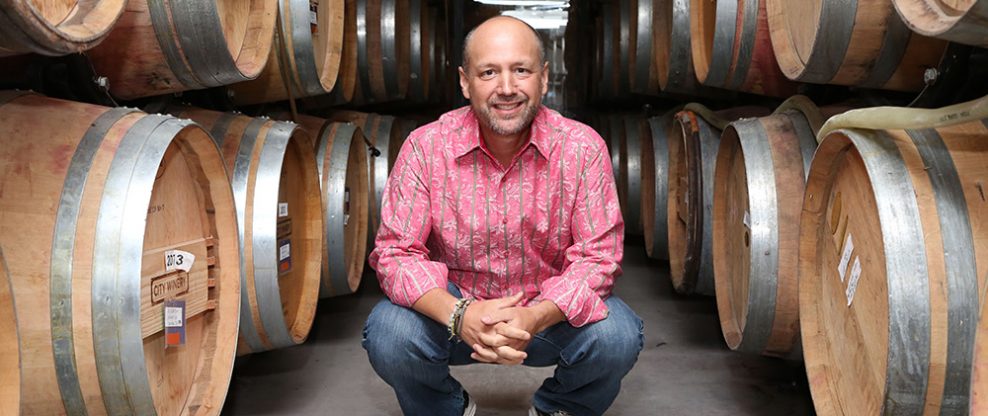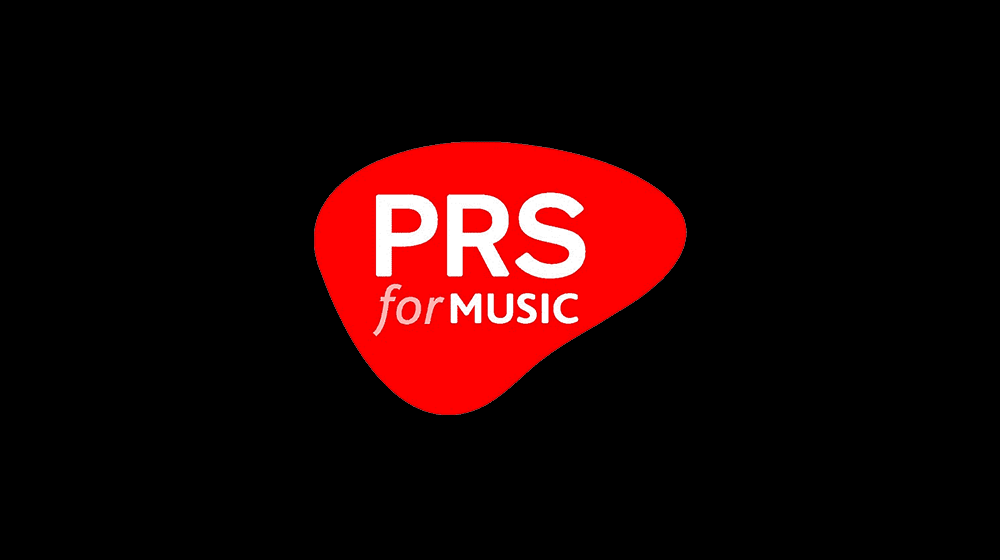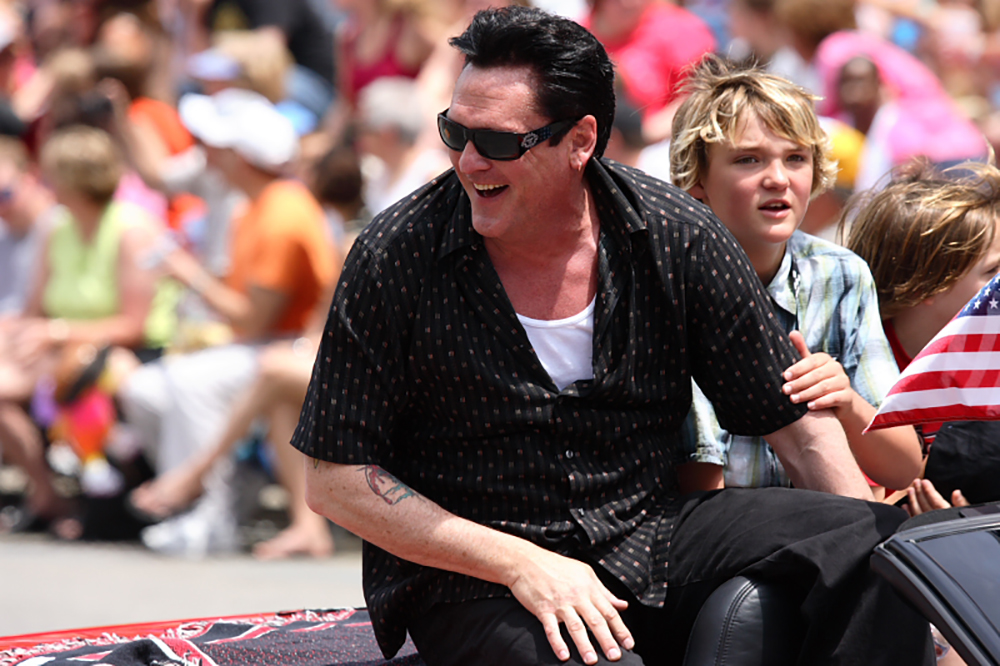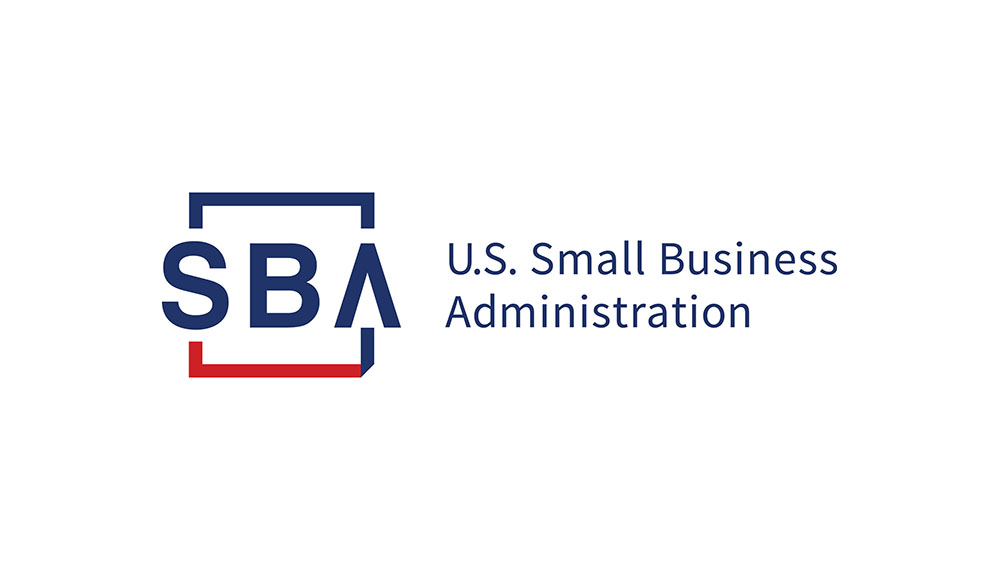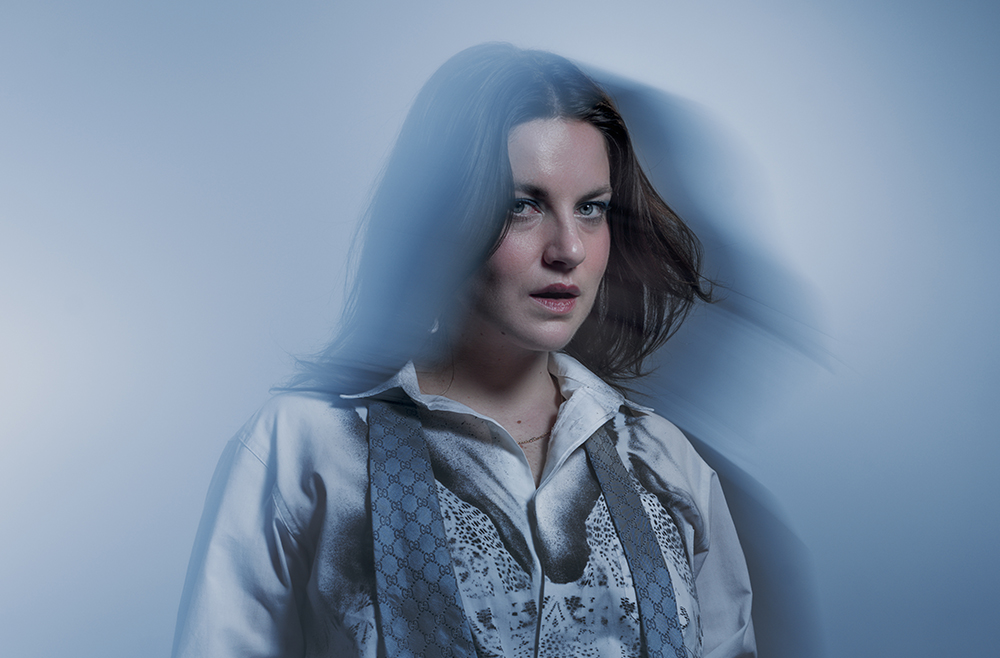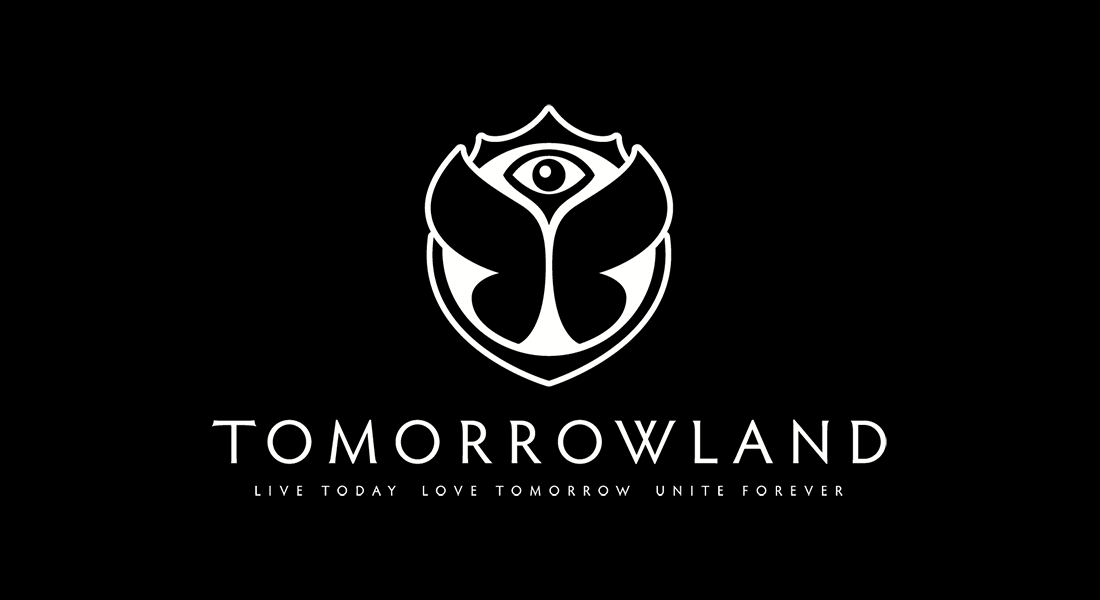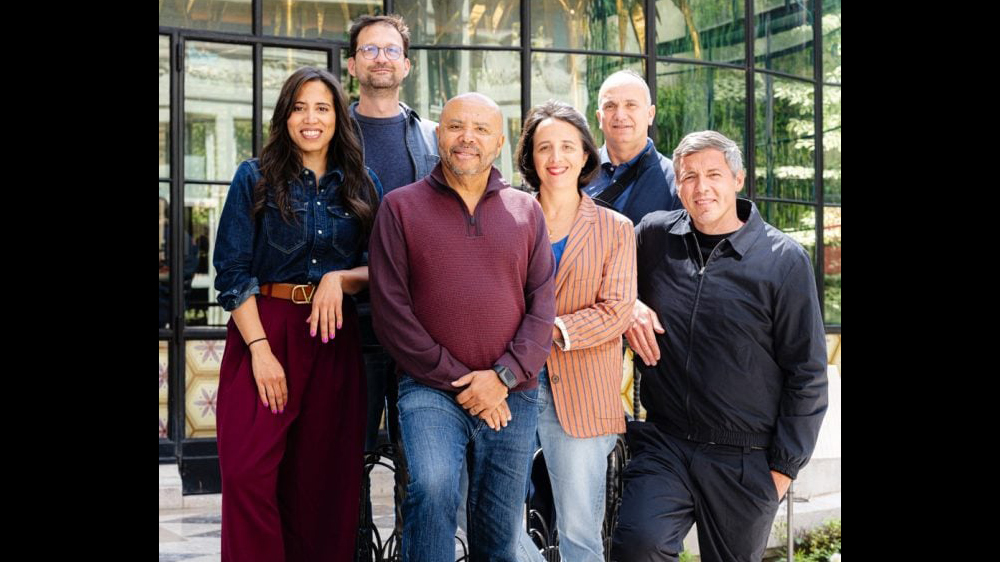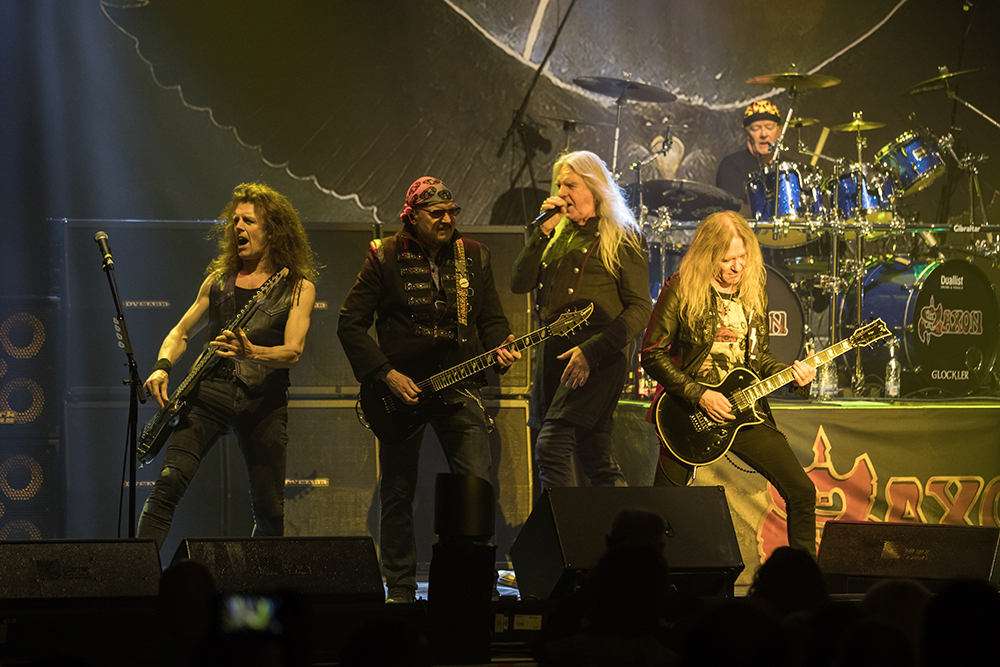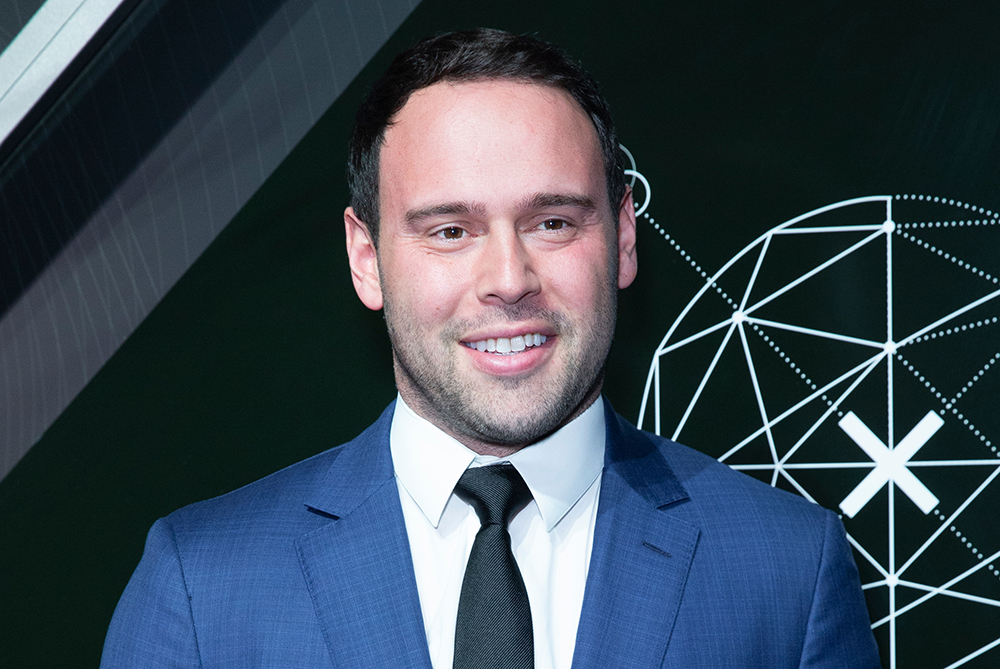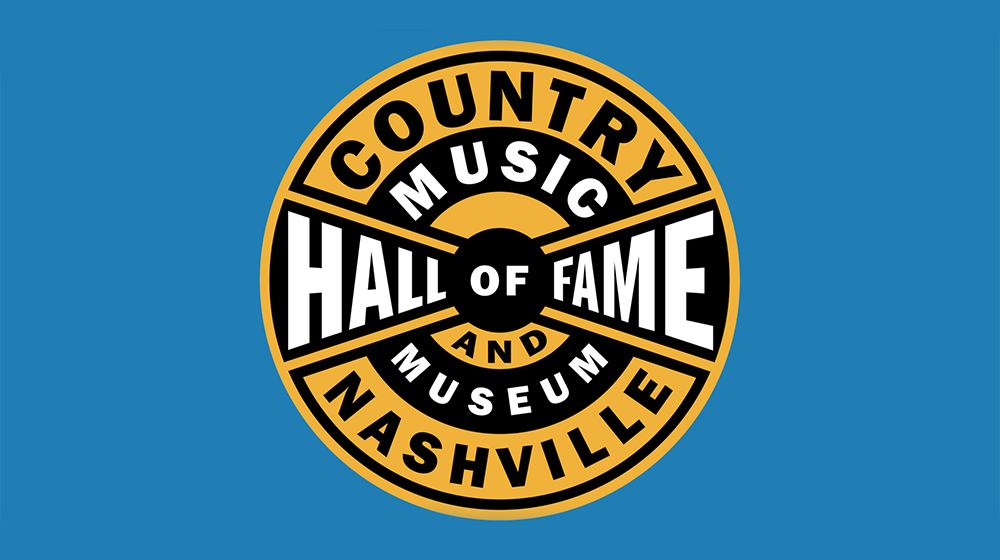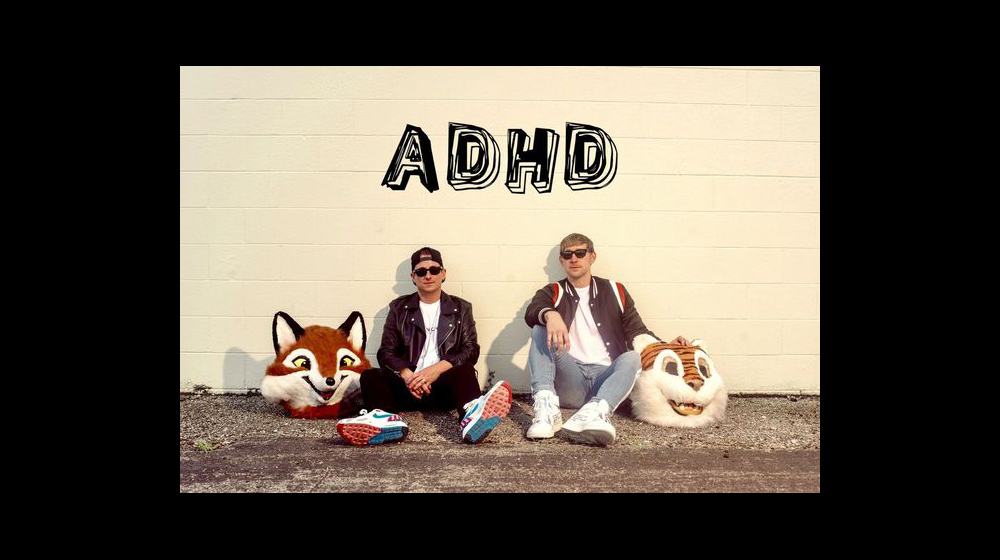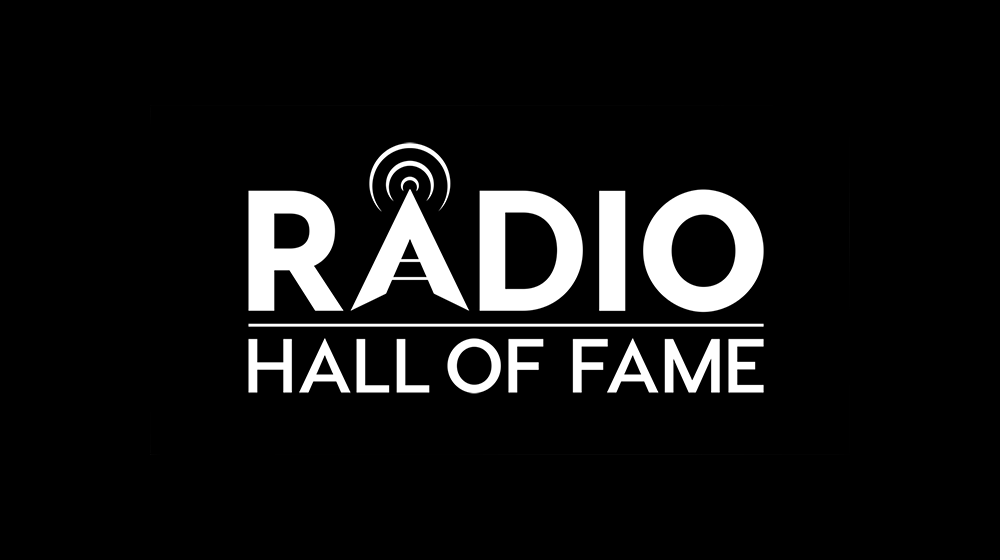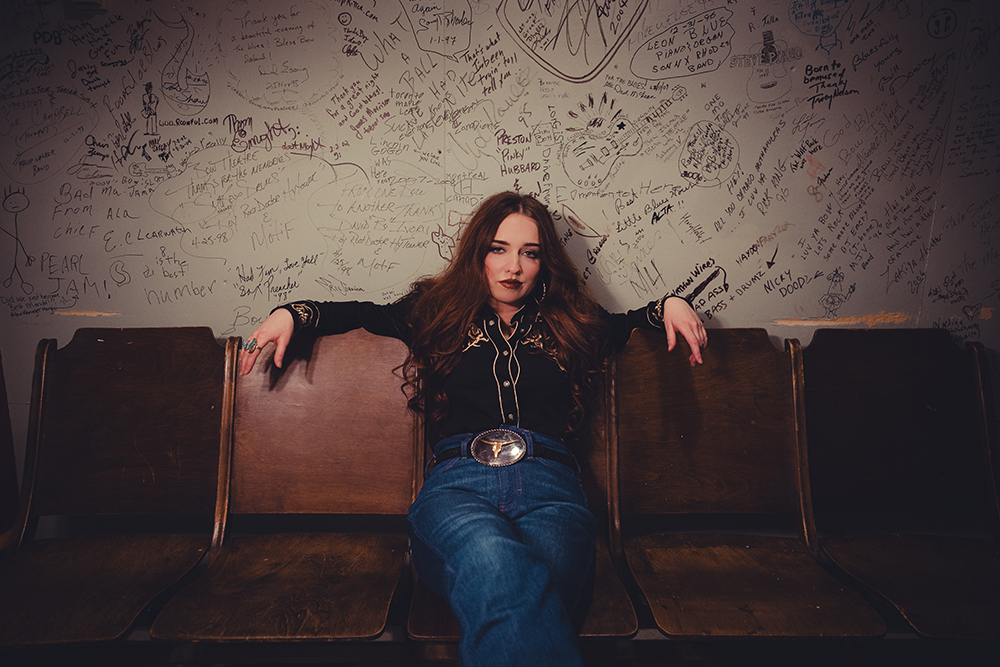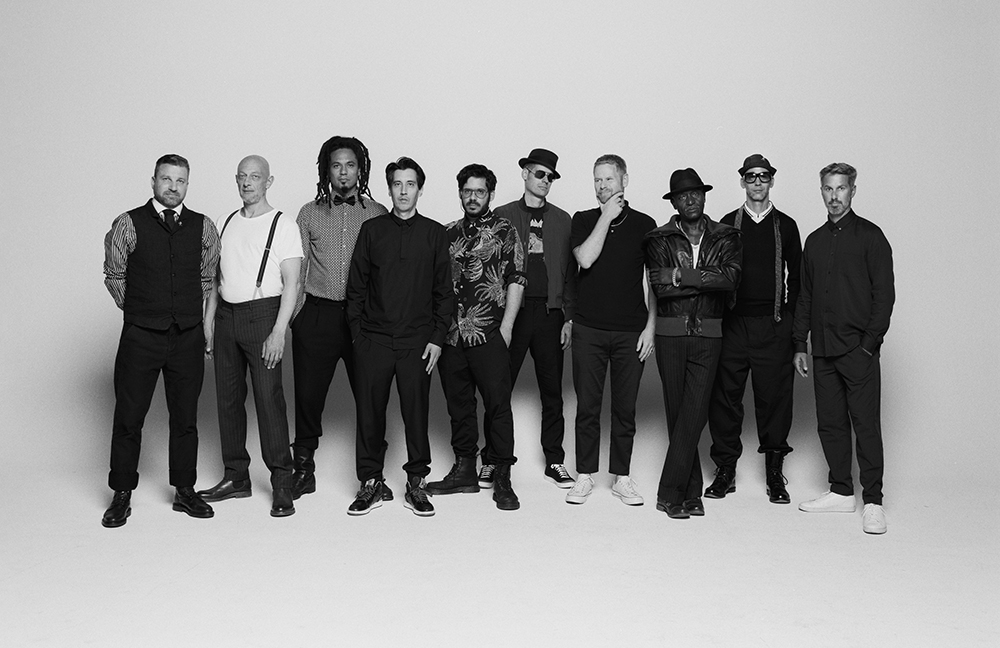This week In the Hot Seat with Larry LeBlanc: Michael Dorf, Founder & CEO, City Winery.
Michael Dorf loves quality wine, great musicians, and telling great stories.
In his recently released autobiography “Indulge Your Senses: Scaling Intimacy in a Digital World,” co-written with Paul Keegan, Dorf recounts the business lessons he’s learned from walking away from the Knitting Factory franchise which he co-founded in downtown Manhattan in 1987; and chronicles the birth in 2008, and growth of his City Winery empire that now includes outlets in New York, Nashville, Philadelphia, Boston, Chicago, Washington, D.C., and Montgomery, New York
City Winery venues, serving as restaurants, music venues, and private event spaces, have unquestionably hit America’s live entertainment sweet spot.
Small enough that these 300-seat City Winery venues feel so very intimate but large enough to attract such top-notch name artists as Prince, Joan Osborne, Bruce Cockburn, the Blind Boys of Alabama, Sinead O’Connor, Graham Nash, and Elvis Costello.
City Winery recently left its 11-year home in New York City at 155 Varick Street, and Dorf signed a 25-year lease for a new 32,000 square-foot space at Pier 57 in Hudson River Park, located near Chelsea Market, the Meatpacking District, the High Line, and the Whitney Museum.
The new location will feature a seated 350-seat concert hall, a smaller 150-capacity loft space, a 100-seat capacity restaurant, a tasting room with Hudson River Park views, and a fully functioning winery/wine production facility.
The tasting bars will feature City Winery’s proprietary tap system featuring over 12 wines straight from kegs.
Was it inspirational summarizing your life in an autobiography?
It was a great process, actually. I enjoyed both going down memory lane, and then trying to articulate it, and then trying to pull the lessons that came out of it. I really did enjoy the process. I am now finding that some people are reading through the whole thing, and going, “Wow, I didn’t know this about you,” or “I didn’t know anything, and I found it (your life) very interesting.” I love how people are finding it so very readable. So yeah, I’m proud of having pushed myself to write it, and get it done.
Your career has been a series of screw-up-ups or sheer misses. You were a self-professed “lousy musician” who took guitar lessons as a kid, and tried to learn “Stairway to Heaven” but you sucked. After dropping out of law school, you moved from Milwaukee to New York to an apartment on 10th Street and unsuccessfully managed your friends Swamp Thing. You next failed at running your first record label, Flaming Pie Records. Then borrowing money, and taking your Bar Mitzvah savings, you tried to open up performance art space/coffee shop with your friend Louis Spitzer on East Houston Street in downtown Manhattan called Expressoism which was almost renamed the Fire Escape before starting the tape series “Live From the Knitting Factory” which morphed into the Knitting Factory in 1987.
You faced one after another financial disruption in running Knitting Factory: Three consecutive rounds of financing—including from a group of venture capitalists you nicknamed “The Vultures,” and also questionable support by a music-savvy investor contact—leading to you In 2003 exiting the company which continues to operate as Knitting Factory Entertainment.
While expanding City Winery, you make a gigantic miscalculation of opening an outpost in Napa, California, the wine capital of America, with a $2.5 million reno tab, only to close 18 months later.
More recently, you were forced to move City Winery New York out of its Varick Street location after 11 years, and following $2.3 million in renovations, due to misinterpreting restrictive lease clauses, including a 12-month demolition clause, and after accepting verbal reassurances that the landlord would not exercise the clause for three to five years.
Still, despite these significant setbacks, you are continually and successfully moving forward.
(Laughing) Well, I ahhhh, appreciate the legitimate analysis (more laughter).
Your idea for City Winery New York was a music venue built around a custom winery. You wanted patrons to make their own wine at a $10,000 to $12,000 a barrel—and put their own label on it. You signed up 75 people. When the economy tanked, you were left with thousands of gallons of wine, and no one to drink it.
Well….ahh…
And you still can’t play “Stairway To Heaven.”
Absolutely not. I think that it takes a long time (to succeed). One of the lessons of the book, I guess, was to know what you are good at. Learn to understand what you are good at, and what you are not good at, so you can excel in the things that you are good at. It takes a while for one to really understand themselves. I will never forget (American jazz promoter and producer) George Wein saying, “You are not going to make money until”…he didn’t make any money until his mid-50s. It took a long time for him. It’s not about making money but, in terms of defining success, sometimes it takes a long time to really understand what is one’s place. What’s the right formula, and how do you fit into certain systems? In that sense, that is what I’ve done.
You learned about the headache of having just a few big investors who ultimately want control is not the way to go. So, for the first City Winery, you took on 43 limited partners and raised $5 million. Also you tried to initiate a barrel program. Then came 9/11 happened and the digital disruption and while you were initially stuck with barrels of wine, you came with the idea of selling wine from a cask.
While expansion with Knitting Factory was too fast and, perhaps, being undercapitalized, it was for your term there not quite successful; it can be argued that being strategic and methodical in going into markets is working for City Winery with the exception of Napa.
There’s a lot of trial and error in your business.
You need to think on your feet for sure.
Your conceptualizations of Knitting Factory and City Winery have been widely copied by others in the marketplace. At the same time, there’s a greater profile of wine in music today with numerous artists entering the wine business, including Pink, who purchased an 18-acre organic vineyard in Santa Barbara County in 2013. Now she’s winemaker of Two Wolves wines.
Also, Interscope Records has introduced Electric Sky Wine which, sourced from vineyards in the French Languedoc, Italian Veneto, and California wine growing regions, is sold largely at music festivals.
As a trailblazer in matching up wine and music, how does it feel having a pivotal role in changing the perception of wine in the live music space?
You know there’s no trademarking or copywriting of the concept of a market winery or putting a unique label on a bottle. Hip hop artists were some of the early adopters of putting their brand on liquor. So none of this is shocking or disconcerting and, on some level, if I’m really being altruistic, and smart about it, then it is complimentary. The fact that more people are going into wine from the music side only shows that there’s more of a connection between the audience that is consuming music and the audience that consumes wine. We are happy to be a leader in that.
Wine is said to teach you to pay attention to both life, and to food.
Yes.
There’s no question that wine goes well with music.
It can go with many aspects of life, culture, and finer things. Frankly, I think it could solve politics. I think that if (President Donald) Trump was able to drink alcohol, in particular wine, we might not be in as a horrible a situation.
Trump mellowed by wine is an image few of us would want to ponder.
But I think that wine is a great lubricator. It is a great relaxer. It feels different from many other alcohols in that it has just a little bit more of a refined element. It is not something that you just chug and drink, just to get drunk, but it is something that you savor. While yes there are certain scotches and beers and fine tequila that one could argue are great and delicious, but nothing is the same level of savoring as wine; and that extra attention you put into focusing, and enjoying the flavor, the nuance, possibly the history and the area it’s from, and all of the components, makes one think a little bit. As your brain is synapsing, and thinking differently again from (drinking) other beverages, you are able to incorporate, and tie in culture or even conversation in a bit of a different way than other beverages. That’s my opinion.
Wine has been produced for thousands of years. The oldest fermented beverage known I think is a 9,000-year-old rice and honey wine identified on pottery shards from the village of Jiahu in central China.
For sure, and there’s all this conversation about craft beverages, craft beers, craft distilleries, wine has always been a craft beverage. Always been made in smaller quantities by artisans, and yes, it has been around for a long time.
The irony of wine is that it’s relatively easy to make, but it’s hard to sell.
Well, this is true. I use that line a lot, but it’s hard to make good wine. It easy to let something ferment in your refrigerator. I’ve had many apple juices turn into something in my refrigerator over the years. But I wouldn’t say that it was any good. The process does require high-quality grapes to begin with, and then it’s about nurturing the grapes for that lifetime. In that regard, there is some interferences by the winemaker and the equipment but, for the most part, it’s really about the growth and the high quality of the wine. There’s an old saying in wine as well that wine is made in the vineyard. And this is very, very true. It really starts with the soil and the climate, and the season. That’s why there’s vintage variations. Obviously, some seasons do much better than others. So it really starts with the vineyard, with the earth, and the quality of the vines, and with the age of the vines that makes the wine truly wine.
City Winery, serving as a restaurant, a music venue, and a private event space, has carved out a niche of a 300-capacity, sit-down, high-end concert space untouched by the two major promoters, Live Nation and AEG Presents. Nor are Live Nation’s House of Blues smaller venues the same.
Not any more. I just find an intimate concert as the opportunity for the artist to look into the eyes of most of the people there or patrons, and the fans being able to really see the artist without a giant magnification screen. That is just too small for the scale of AEG and Live Nation. And then the way we have enhanced that entire experience with food and beverage, the service and hospitality side of what we do, Live Nation and AEG are just not capable of at their size to do. They certainly have up to now made conscious decisions to not go after that space. It is too challenging and, maybe, too costly, and they really don’t see that value.
Live Nation and AEG are focused on other environment enhancements on a larger scale, and likely see what you do as small potatoes.
For now, they are leaving us alone. I agree.
You pride yourself in the relationships you have developed with the musicians playing your venues, and festivals over the years. At the same time, in an era of competitive consolidation, artist fees have risen rapidly, if only because of losing other revenue streams. Operating 300 seat venues and booking major acts, are rising artist fees a concern as you fight to keep ticket prices reasonable?
No. I want nothing more than the artist to be even more reliant on the live performance space. I’m happy to do anything that I can to give. and get the artists a fee that they are trying to earn. We calibrate and create our ticket pricing pretty much based on, “What does the artist need?” So if they need $30,000, and we have 300 seats, therefore we need to at least charge $100 a ticket, if we are going to give them that. The ticket price is based on what the artist needs. Now there’s a point if we think that the artist fee is not going to be sustained by the ticket price than we are going to say something. Maybe, God forbid, even pass, if it is beyond what we can afford. But we are happy to have them pushing for as high a fee as they can, and for us, on some level, to push the market pricing to give it all to the artist.
City Winery makes its profit on wine and food.
Absolutely. Our entire focus is on the food and the beverage. That is where we not only make a much better margin, but that is where our attention is. That is where we are putting all of our energy, and that is where we make our margins. As long as we have a full house, we’re very content with giving the artist a higher disproportionate percentage of the box office. We think that this is an ecosystem that works really well, and one that we find very sustainable, and it’s one of the reasons why we are not drifting into the festival business or, maybe, drifting into the bigger venues…
During your Knitting Factory years, you had promoted a number of festivals via a spin-off entertainment company, KnitMedia, including the What is Jazz Festival and, with the Digital Club Network with partner Andrew Rasiej, you started the Macintosh Music Festival. So why not festivals or larger venues under the City Winery umbrella?
Well, that world has just got much much more competitive, and that is where artist fees have gone through the roof. In terms of playing a small room, you can get some of the biggest names who say, “I want to play in a small room, and I want it to be a high-quality room. I am not doing this performance to make money. I am doing this performance because I want to be in a small room.”
What’s helpful is that City Winery controls its own ticketing. You have developed your own ticketing technology that allows patrons to pick their seat, and allows them to pick their favorite seat if they are a regular. City Winery also retains detailed histories of its clientele, indicating what they ate and drank previously. Your sommeliers are able to recommend wines to patrons based on what they’ve drank at past shows.
That’s a big piece for us. We insist on that being a big part of our model.
How is the new City Winery in New York coming along?
The new facility is going to be very exciting. The old (home) was destroyed. I’ve got some bricks that I took from there. We salvaged the wooden beams from that facility, and we plan to use a bunch of the wooden beams for decorative reasons in the new facility. I get excited by the new facility. It is truly one of those “out with the old, and in with the new” rationales, and I’m very excited by what we’ve got going downtown at 15th Street, Pier 57. It is truly going to be an extraordinary facility. So that keeps me extra excited knowing that we are building a true temple to new music. The 11 years of City Winery experience, and I guess my 15 years of Knitting Factory experience, everything is really coming together in terms of building what I think is going to be the greatest music room in New York City.
(Pier 57, at 15th Street and 11th Avenue, formerly served as a terminal for shipping and storage of cargo for the Grace Line. Between 1969 and 2003, Pier 57 housed the Hudson Pier Bus Depot for the New York City Transit Authority. Since plans created in 2009 called for an improved pier design for commercial use, Pier 57 has been transformed into a mixed-use development. To its south, a 2.7-acre man-made island for arts and recreation to be called Little Island is scheduled to open in spring 2021. Nearby is The High Line which is a 1.45-mile-long elevated linear park, greenway and rail trail created on a former New York Central Railroad spur on the west side of Manhattan in New York City.)
In essence, you are getting to rebuild an entertainment venue to really get it perfect.
Yeah. It’s very true and I agree. Each time it gets better and better. So we get to fix the mistakes of the past. I’m not bashful about admitting that we made a lot of mistakes over the years, and we are super excited about putting all of that into a much better facility today.
You looked at 100 building before finding this one?
Yeah, at least.
And you wanted to stay on the West Side?
I’d say more important than East or West was being downtown. Downtown was essential. I did look on the West Side and a lot over on the East Side. I wasn’t exclusive to the West Side. But I did look at hundreds of places. It took a while to find. Ironically, Pier 57, I actually had looked at 5 or 6 years ago. I have always liked the building. I thought the building was fantastic
When do you expect to open?
We are looking at the middle of March 2020. Originally, it was a little earlier than that. That’s the most recent update.
By now, you are well-versed with construction overruns, certainly from the three-month overrun in opening Knitting Factory’s second venue in Los Angeles in 2000, that was located in the heart of Hollywood just down from the intersection of Hollywood and Highland.
That’s true. That was the first of several times that I have had to push back on opening. I’m a lot smarter now.
Pier 57 is unique in that it’s downtown, and it’s a great transportation hub.
Oh yeah. No question. The High Line was just a concept when I first looked at the building. Two years ago before we got our eviction notice from Trinity/Disney I had been invited there to see the plans that they had. At that point, it was a different set of plans with a food market and other stuff scheduled. So it was just very appropriate and, on some level, quite lucky that I was able to come in and get the deal.
You also currently operate City Vineyard at Pier 26 which is a stand-alone restaurant that, unlike City Winery, does not make wine.
It’s all the same ownership. It’s all part of the City Winery umbrella, but with City Vineyard we got lucky. We won the bid to get the space, and it is all part of the City Winery parent company.
City Winery wouldn’t be able to flourish near the Times Square area heavily populated by tourists?
No.
Why is neighborhood so important to City Winery?
If we were going after being a tourist business, perhaps Times Square would work. We built a pop up this year called City Winery at Rockefeller Centre, and that is perfect for that touristy area. We are serving a lot of people Rose and Sauvignon Blanc and they are tasting our wine, and that is exactly what we intended; but for City Winery, we want to be much more of a New York institution, something that New Yorkers feel proud of as an independent music space that is their own, and within that, and in terms of the music spaces, we want City Winery to be looked at as a little bit more cutting-edge, and hipper, if you will. Therefore, being in a very super popular touristy area just doesn’t fit the right image.
Obviously, you are looking for repeat business from your clientele being local New Yorkers.
We want a regular local clientele. We feel that if we get that we’re always going to have an interesting place that tourists are going to want to come to, but first we need to make sure that we satisfy the strong local clientele.
By now, everybody knows your story of completing $2.3 million worth of construction at City Winery’s 155 Varick St. location and, after extending its lease for 5 years in Sept. 2017, you learned that the building was part of a Trinity Church-owned parcel to be sold, and to be demolished. In a $650 million deal, Walt Disney Co. took a 99-year lease on the property and plans to develop a million-square-foot office complex known as 4 Hudson Square.
So City Winery was ousted.
You claim that the investment renovation would not have been made if you had known you’d be forced to close a year later. You want to recoup your loss, and you are suing Trinity Church to get it.
Where does the lawsuit with Trinity Church stand at this point?
We filed a lawsuit. They submitted a motion to dismiss. The motion to dismiss finally was heard on Yom Kippur (Oct. 9th, 2019). The day before we received notice that the court wanted us to defend our motion to dismiss on Yom Kippur. Luckily our law firm, which is mostly made up of Jewish lawyers, did find somebody that represented us the next day. We survived the motion to dismiss which is a very good thing. So now Trinity has filed an appeal trying to continue keeping us locked up in court. That could go on for another 6 months. We are trying very hard to bring in a…to get some sort of meeting or mediation. Anything to get them to come to the table because now we have demonstrated by surviving this motion that it’s not that easily dismissible. We do have real grounds that we can stand on. Most players at this point would feel more like, “Well, it’s time to settle.” But they are the Church, and they have unlimited resources, and their strategy is, “Let’s see if we can bleed these guys with legal fees, and have them ultimately lay down their sword.”
(Trinity Church has, however, said otherwise. “We believe the lawsuit is entirely without merit,” a spokesperson said in a recent statement, declining to elaborate.)
(According to Michael Dorf in the New York Daily News (July 28, 2019): “The problems began in late 2016 when Trinity informed us that the top floor of our two-story building was available — 10,000 square feet just above City Winery — and made us an offer: Why not construct a roof-top bar, which would be a perfect fit for the upscale “Hudson Square” image the church was promoting for the neighborhood? We could also renovate the second floor to create company offices and a 150-seat music club called The Loft.
The whole project would cost us $2 million, but, between the rent abatements offered by Trinity and increased wine sales, we would earn that back in about three years; after that, all profits would be gravy. For Trinity, the renovations could significantly increase the market value of the building. In September 2017, we shook hands and signed a five-year lease extension.
Now, here’s my bad: The extension, just like the original lease, did have a clause stipulating that, if the building was ever slated for demolition, we would have to vacate within 12 months. And both times, I signed on the dotted line.
But from the beginning, as I set out in my lawsuit, my friends at Trinity dismissed that language as standard boilerplate text that would most likely never be triggered — and, even if it was, demolition projects take a long time and we would certainly get far more than twelve months’ notice. They assured me it was perfectly safe to go ahead and invest the $2 million.”)
While the City Winery lease contained a 12-month demolition clause, you maintain you were assured that Trinity would not exercise the clause for three to five years, enough time for City Winery, through an adjusted rent arrangement, to recoup its investment. I can’t believe they’d encourage you to do $2.3 million worth of construction, and then sell it shortly afterward.
Well, Trinity was absolutely not being human, and at all right in how they approached it. They could have very easily said, “You know what? The likelihood of us demolishing this is strong, so we advise you not to do this. We are sorry we brought it (the suggestion to remodel) to you, but this is the circumstances of change since we brought it to you.” Or whatever might have been the case. But that’s not what they did. That’s not how they approached it.
City Winery Philadelphia has just only opened in the recently unveiled Fashion District Philadelphia, the mall formerly known as The Gallery.
We started construction about 8 months ago, and we opened and it came out of the gate very strong.
You are looking at expanding to Toronto, Milwaukee, Pittsburgh, Houston, Denver, Seattle, and Miami?
These are all on our radar.
Even having a background to deal with both tenant contracts and financing issues as well as the disclosures that are standard to most rental contracts, there are almost always certain surprise clauses in leases, particularly in New York City, including what is called the “knock down clause.” Is New York City one of the rougher real estate markets to swim in?
It’s not a definitive yes. The real estate world is challenging everywhere, and in New York because of its size, there are so many things that are rougher than others because you have much more competition, and you have much more ruthless practices that happen; and therefore the whole raising of the bar of how business is done becomes more challenging; and you have to be more on your feet than, perhaps, in other markets. But that’s just a relative issue. It’s not necessarily that New Yorkers have developed a norm of being more difficult. Toronto is a very very difficult, and challenging market. Los Angeles is also very tight. There are other components there that are natural to Los Angeles. You certainly have characteristics of the city that are reflected in the way that it does business. New York is a huge city, and the business is very challenging here.
Was it easier reaching an agreement to buy a former yarn factory, Montgomery Mills, in the Village of Montgomery, New York from the Steinberger family? The venue now includes City Winery’s first wine-production facility, and a 15-room boutique hotel is planned for later construction.
Well, funny you say that. First of all, let me be very clear. Buying a property versus renting a property is just a whole other animal. Once you are the owner of a property the opportunity to do different things in terms of one: You are building something essentially to last forever versus for a short period of time. You get to see all of the value increase of the property over time. So that naturally lends itself to wanting to take care of it (the property) differently than if you are just a tenant. So they are different animals.
What was the town’s reception to you purchasing the 22-acre property which will have 10 acres of grapes planted?
The town of Montgomery was very open at first to getting us there. Turned us onto the property, and it became very exciting. There are many people that are super excited about us being there, but you also end up getting a lot of small local, very rural politics involved; where this paving company (owner) is a cousin of this person who sits on the town planning board, and so they didn’t get the asphalt job, and so now they are upset; which, in turn, the person on the town planning committee won’t approve a deer fence around a vineyard; where there are hundreds of deer that are eating our vines which is the whole thing (reason) that they wanted us to do there anyways because what replaced the junkyard was the vineyard that we put in there had toxic stuff that we cleaned up. They were all excited about a vineyard going in but, of course, a vineyard without a deer fence to allow vines to grow doesn’t make sense There’s just some silly, stupid local politics stuff there that we don’t also see in larger, more sophisticated markets.
(The converted historic Montgomery Mills, overlooking the Wallkill River, began as the Montgomery Worsted Mills grist mill in 1813. The mostly wooden mill was rebuilt in 1892 after a fire. It converted to wool production in the late 1880s and ran until the late 1990s. In recent years it’s been home to tenants like Henry’s Attic hand-knitting yarn business, Architectural Mouldings Hardwoods & Supplies, H.C. Davis Boiler Co., Prosperity Stairs & Rails, and Valley Cabinets. Morris Seinberger bought the mill in 1930.)
You have long owned a home near Minnewaska State Park Preserve about 20 miles away?
Yes. Personally, we have a second home near The Mohonk Preserve. It’s a great location for hiking. We have been up there for a long time. I’ve always liked it.
Where do you stand now with Montgomery Mills?
Well, Phase I is finished. It is very exciting.
You are looking at doing 30,000 to 40,000 cases of wine a year a Montgomery Mills?
Oh, way more than that. Let me back up. The New York City location was at about a 10,000 case production level. We grew with all of our locations between the City Vineyard, Nashville and Chicago to the production needs of about 60,000 to 70,000 cases in total; although as we have grown, we are bottling a lot less. We are putting a lot more out in pure cask wine. Right now we are at a pace of 70% of all of our wine being tap wine, and not bottle wine. It’s easier for wineries to talk about their case production, so our total, if you will, case production today at the Winery is 60,000 to 70,000 cases. We realized that we are now selling a lot of high volume wines by the glass, Rose and Sauvignon Blanc at places like City Vineyard, and the Rockefeller Centre and at things that we did at Yankee Stadium and Forest Hills and other locations. We are making a lot more high volume wine that we sell by the glass. So for that we needed a bigger production facility.
So the upstate location will be creating a much more robust wine-by-the-glass program, and that program is essentially going to be supplied by upstate for the East Coast. So we think that facility up there will do the equivalent of 50,000 cases of wine but we are actually not bottling and creating cases, as most of the wine we are making, is going into stainless steel kegs and sold as tap wine by the glass in our locations.
You’ve underscored business as being “Go big or go home.” However, I’d argue that some of the issues that faced Knitting Factory were overexpansion as well as overextension of your own activities. Looking from the outside I might contend you somewhat took your eyes of the core business. Knitting Factory became less about the music and the artists, and more about webcasting, and producing content, and making as much profit as possible. As a result…
Uh-huh.
Well, you helmed Knit Media which became focused on web development, hubcasting, a BET cable TV show, Knitting Factory Records, and such ventures as MacFest, the Bell Atlantic Jazz Festival, and the Digital Club Festival. Are you not doing the same thing now with such an expansion of the City Winery venues, along with other activities like the City Winery-affiliated pop-ups and event promotions? How do you know when you are overexpanding?
Well, I don’t think that you fully know. A big difference is with the Knitting Factory I was getting into many different businesses around the brand. A lot of media, a lot of different forms of media, and during the dot.com build-up, there was tremendous interest in many things, non-brick and mortar. City Winery is very focused in terms of that we are an entertainment company that has combined a wine business to focus ourselves. So we are all about selling wine. We use entertainment as a tool to get people into our wineries and to sell wine. That’s it. There’s nothing else to it. So our expansion is just on that premise. Build locations where we can use our entertainment, our understanding of creating a great show and, in turn, sell people really great wine.
Would you, perhaps, concede that you personally overextended and overcommitted yourself while at the Knitting Factory, and that led to your eventual leaving?
Ummm, no. No, I don’t think that was the reason if we are trying to pinpoint what was the challenge was…
For the first City Winery, you took on 43 limited partners and raised $5 million. You obviously learned a lesson after having a few big investors at the Knitting Factory who ultimately sought control. That, coupled with other factors, led to a downward spiral in business, and your departure.
Well, it was a combination of things. Look at what happened in the expanse of something like 20 months. Not even two years. We had the complete dismantling of the record business with Napster. We had the complete dot.com crash of the internet. Then we had 9/11 happen which primarily hit two of the three most tourist-driven markets in America, New York, and Los Angeles. We got completely crushed in L.A. and in New York for a time. We had a one, two, three punch. No excuses, but there were circumstances that made it very challenging for me. I had been raising money well before those things happened. Right? I was just going along with what was happening in the marketplace.
Working within the world of showbiz venture capitalists.
They were naive deals. I wouldn’t say they were about overextended deals. I think that they were naive deals.
You have said Knitting Factory never made a lot of money. At one point you were traveling overseas to your office in Holland with suitcases of CDs to sell in order to finance day-to-day expenses.
Very true. It more than helped. Some days that was essential. So anyway I would say that I think that there are different beefs. There is a shared component between the two which was being both aggressive, and expanding rapidly. But I do believe that there is a difference between the two, big time, in terms of how I am approaching now rapid growth versus what I did at the Knitting Factory. I’m doing it with a great team. I am doing it very methodically, and we are focusing on what we know how to do really well rather than going into stuff that I don’t know anything about. So those are big differences.
Tell me about one of the futuristic concepts you foresaw while at the Knitting Factory. A hundred people plugging into the internet, and being heard by millions around the world. That indeed was the thinking back then in entertainment because of the social promise of the internet. Business stakeholders and chief information officers in both B2B (Business-to-business) and B2C (Business-to-Consumer) environments were seeking to deploy IT solutions to power digital transformation initiatives to revolutionize customer relationships, and enhance operations. Nevertheless IoT deployment momentum brings its own challenges. What was your reasoning founded on?
In 1986, ’87, we were reading reports by very important research entities. Forrester Research, McKinsey Research and Jupiter Communications that were all basically confirming the same projected fact which was that in two to three years every household in America would be wired with essentially the P1 line which is cable, modem plus and that everybody would be surfing the Web. First of all it took 10 years to even get 50% of the way there in terms of homes that have that kind of bandwidth. But there was just this overzealousness of how quick it was going to go, and because you are seeing these…and I am not just blaming them. You have to blame everybody.
At the time, data was being projected to become a hugely valuable commodity as companies sought ways of making money from users’ web habits including providing enhancements of the musical experience. That optimism continues today. Still, while speculation about technology and recorded music continues, the live music sector has exploded.
The Global Entertainment & Media Outlook 2019–2023, the just-released update to PricewaterhouseCoopers’s annual Outlook report, predicts that live music ticket sales will increase from $21.3 billion in 2018 to $25 billion in 2023. Overall, live music turnover (ticket sales and sponsorship) will reach $31.5 billion in four years’ time.
The only thing that is true that I know—and I can’t speak to any of those things; that’s all conjecture—is that the consumption of music is more ambitious and more prevalent than anytime in any of our lives. Whether it is consumed for free, via personal iPhone or played in subway stations or airports or restaurants or used on every commercial and on every TV show. music is ubiquitous and is being consumed.
Creators and copyright owners getting paid for their music is the problem and…
Exactly.
Music may be ubiquitous but with City Winery presenting live performances, if you want to see that one artist perform that you have heard via different sources, there is only one way to see them, and that is live at a precise time.
That exactly was my read. The decision to focus my energy on live music was kind of predicated on that. I have no idea where the delivery of music is going to go, but there is no question that the live performance is precious. It is unique, and if we can carve out a particular space within the live music space, which is kind of more luxury-feeded, intimate concert environment; that is at a high end for potentially an older more sophisticated demographic, that is a particular space that I want to be in. So that is our business.
While it’s magical when music, food, and wine are properly combined, you naturally couldn’t resist opening a 300 seat City Winery in Napa, California in 2015. So beautiful a backdrop, so special and so intimate, but also such a competitive world, and the club failed.
You have attributed City Winery failure there to Napa’s lack of urban environment central to the City Winery theme. Your son Eli said to you, “Dad what are you doing? It’s called City Winery. Why are you in Napa?”
Ah yes, well, Eli was very smart, and I was not as smart. I had drank the Kool-Aid about being in the home, if you will, the ground zero of winemaking in the United States. Between that, and being offered the opportunity to take over what was the first cultural facility in all of wine country, The Opera House (The Napa Valley Opera House) that opened in 1880 in Napa, and then was subsequently renovated by the Mondavi family (at a cost of total cost of $13.7 million). I got to work with Margrit Mondavi on this project, and so I got very excited by all that. But it was a mistake. Hopefully the last location mistake that I will make in my life but we will see. There might be more in there but right now that was a doozy.
(After a $2.5 Million renovation, City Winery Napa opened on April 10, 2014 with Bruce Cockburn appearing, and ceased operating in late 2015.)
It was very clear from the first couple of months that we were selling out our shows but nobody was drinking wine. Wine tourists were buying the tickets; they were loving the space; loving the shows. They thought the setting was really great that we built and the entertainment itself was really strong but they had been drinking wine all day long…
And the last thing they wanted was more wine at night.
Yep.
There’s so many wineries in the region too.
There’s 600 bonded wineries in Napa, and about 800 bonded wineries in Sonoma.
You have a wonderfully funny story about Prince performing at New York’s City Winery with New Power Generation (fronted by Shelby Johnson and Liv Warfield), and 3RDEYE Girl together during the “Purple Week” run in Aug. 2013.
It was crazy.
You had worked with Prince a couple of times by that point.
We had done the Carnegie Hall tribute of him two years before that. Then about a year after that, he did the Chicago City Winery on a whim. Called us the day before. He was in town for a wedding and he wanted to do an afterparty, and we had gotten on his radar. That show went off really, really well. From there, we now at least had some degree of contact with his assistants. He didn’t have a standard manager or agent. We talked through everything with one of his young female assistants,
How did “Purple Week” come about?
We got a call at one point saying that he might be interested in performing around the video music awards. So we came up with this four-day thing called “Purple Week.” He had New Power Revolution and 3RDEYE Girl band and created this great musical band that for four days was going to play. He would commit to playing at least once, if not all four, during the run. We couldn’t promise which night, and we couldn’t say that he’d be there for all of them. We had to keep it loosy goosy; the way that he wanted. And that is how we had to market it. So it was not an easy way to market it but would we accept that? And the answer is absolutely. We did that.
So how did you run afoul of Prince?
Wednesday night, the first night of the run, there was a blog that was being recorded, and they asked me to be on it. It was at about five o’clock on the night of the first show. In it, what came out of my mouth was, “Listen I’ve been trying to get this motherfucker to play City Winery for a long time.” I said it in a very endearing way. The night before I had seen “Purple Rain” for, maybe, the 10th time and that word is probably used a billion times in that. So it was like it was part of the vernacular. Not within 10 minutes, i got a fax that asked, “What number can we reach you?” So I responded, “Well you can call me on this number” So then this girl calls me, and says, “I am with Prince, and he just heard you call him a curse word. You know that Prince doesn’t swear anymore, and you know that his name is Prince. I’m not sure why you would call him a curse word. So, unfortunately, we are going to have to cancel for the next four nights.”
Your reaction?
My heart obviously stopped and I thought, “Oh my God, I really screwed this one up so bad.” I said, “Is there anything I can do? That is not how I meant it. It was not what I was thinking at all. I was simply referring to him in a way that…I am so sorry. Is there anything I can do to make up for it?” She said, “Hold on.” She gets back to me, and she says, “Well, if you write 100 times on a piece of paper, ‘I’m sorry, your name is Prince’ then we will reconsider.” So, I did. I wrote it 100 times. The office was taking photos of me doing it, and people were laughing. There was a small part of me that was like, “Well fuck him,” but, at the same time, I was like, “There’s no way that I am not going to not do this because I would do anything I could to have him play in our place.”
How many nights did he perform?
He ended up doing two of the four nights. Both of them by far the single greatest nights of music that I can ever recall. They were just phenomenal.
In your book, you relate a most wonderful story from your Knitting Factory days in 1997 when Lou Reed invited Czech president Vaclav Havel to see John Zorn perform at the club. Then, Secretary of State Madeleine Albright turned up, flanked by a contingent of security agents. Meanwhile, John Zorn, who wasn’t aware who was in the upper area, was furious they were talking.
Absolutely one of my #1 memories. No question about that. The single best piece of it for me was being able to look and kind of giggling with Lou, like two little kids in the corner from Madeleine and Vaclav, almost laughing out loud. It was unbelievably funny but we were trying to keep it quiet. It was just the most incredible moment.
How did the night happen?
Havel was a good friend of Lou Reed’s, and he had asked Lou about going out in New York to see some music. And Lou called me because we had become good friends at that point, and he said, “Hey, what have you got going?” So I said, “Well it turns out that we have Zorn’s Masada–(Joey Baron (drums), Greg Cohen (double bass), Dave Douglas (trumpet), and John Zorn (alto saxophone)—which is one of the easier to listen Zorn things he’d had. “And it will be great.” Lou knew the members of Zorn’s band, and really loved Joey Baron on drums.
“This will be perfect. I can’t wait.”
Two days before the show Lou sends me this note or he calls and says, “Do you think we can put out a little table with a nosh for Havel? He’s coming with about 6 or 8 security guys, and it is possible that there might be somebody from the State Department. We might need for about 10. Just put something out.” I said, “Sure.” Then about a half-hour later he calls back, “The person from the State Department is going to be the Secretary of State Madeleine Albright. She’s coming as well with a security detail. So maybe you need to put out a nosh for 20 people.” And I’m like, “Okay, no problem. I will do that.” Then 20 minutes later I get another call, and it’s the NYPD saying they that they are going to be doing a site tour the next day and the day before and they need some security detail on the block. There’s a suggestion of closing off Leonard Street between Broadway and Church blah blah blah. I’m like, “It’s up to you. I don’t think that is necessary. This is a little bit out of my league, but go for it.”
Then the day of?
We get swept by two or three different security details. NYPD, a foreign secret service team that works with the Czech Secret Service, and then Madeleine Albright’s secret service. So everybody is swarming around the city and the Knitting Factory. It was a zoo. Then Lou comes over with (wife) Laurie (Anderson). Lou checks to see if I put out a good nosh. Havel comes. It was just the three of us for about 15 minutes. Then the show starts. There was some quiet whispering, but we were respectful of the music and listening. I had earlier met Havel through Lou before that so it wasn’t my first time meeting him. So I was less nervous. He was a nice guy. Totally into music.
Then 20 or 30 minutes into the show Madeleine Albright shows up. There’s a huge disturbance when she walks in. Even knowing that there’s a show happening she’s like, “Vaclav, darling,” whatever she said, it was really loud. So they started talking and the secret service were talking to the other secret service. All of a sudden there’s this pretty loud commotion, That is when Zorn stopped the show and yells up to the top, “Hey you up there. Shut the fuck up.”
Literally, everything went completely silent.
The whole room. Everybody silent.
The Secret Service reached for their guns. There’s this flinch of, “Okay, you can’t say that to my guy.” There’s that moment. Then we saw Havel and Madame Secretary start to whisper and make hand motions. Zorn started playing again. Lou and I were like, “Oh my God, did we just see Zorn tell the president of the Czech Republic, and the Secretary of State to ‘Shut the fuck up?’ How great is that?”
And when you told John Zorn later what had happened.
He is unruffable, right;? He didn’t really care who it was.
Larry LeBlanc is widely recognized as one of the leading music industry journalists in the world. Before joining CelebrityAccess in 2008 as senior editor, he was the Canadian bureau chief of Billboard from 1991-2007 and Canadian editor of Record World from 1970-80. He was also a co-founder of the late Canadian music trade, The Record.
He has been quoted on music industry issues in hundreds of publications including Time, Forbes, and the London Times. He is a co-author of the book “Music From Far And Wide,” and a Lifetime Member of the Songwriters Hall of Fame.
He is the recipient of the 2013 Walt Grealis Special Achievement Award, recognizing individuals who have made an impact on the Canadian music industry.

